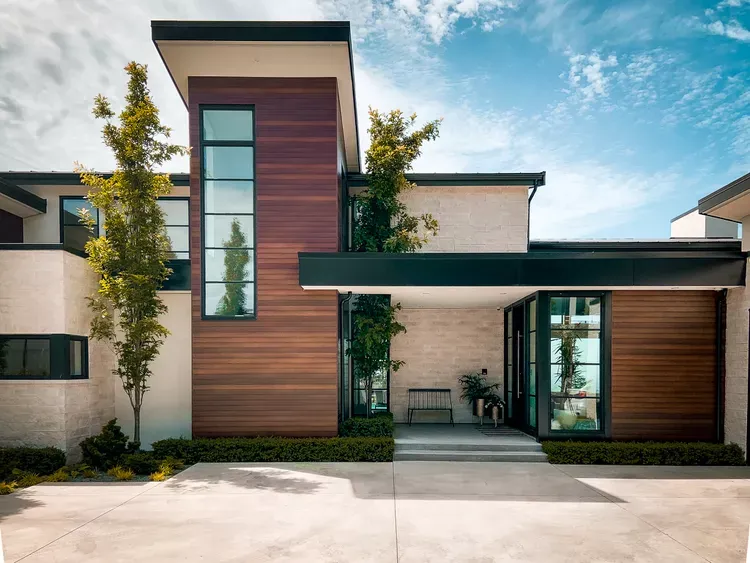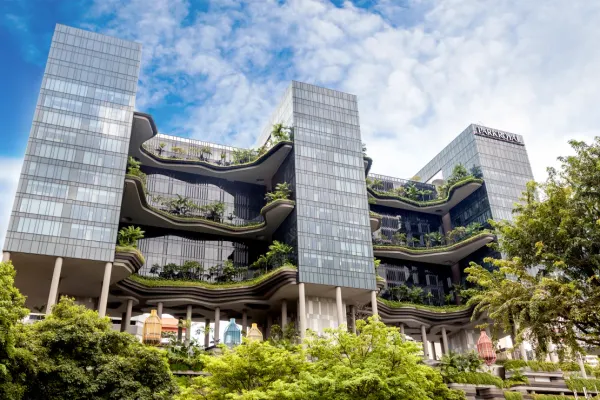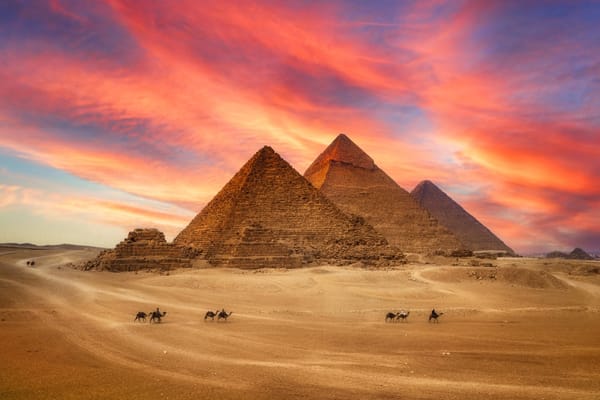Is Modern Architecture Losing Its Flavor?

Modern architecture according to Chandrasekar is defined as, “one that is characterized by the philosophies of “less is more”, “form follows function” and minimalism” (Chandrasekar, 2022). There has been a lot of talk about whether modern architecture is starting to get monotonous and boring. Honestly, when you imagine a modern house in the USA, you think about the same basic design and at first, it was nice to change from vernacular ways of building to modern but many people are arguing that we need to plug back into vernacular architecture. I can agree with that statement as well. However, let’s take a look at whether modern architecture is losing its charm or if it's just evolving.
The buildings built in this modern age seem to prioritize form and function rather than ornamentation and detail. In figure 2 and 3 you can see the clear difference between the traditional and modern architecture. Some argue that it is inevitable for modern architecture to be boring, Dominic Frisby in his article says that, “When final say falls to the regulator, not the creator, and he/she never thinks in terms of beauty, only rules and career risk, and construction is always planned with his or her approval in mind, you immediately clip your wings and more. Imagine Michelangelo, Rembrandt, or Beethoven requiring regulatory approval for their work” (Frisby, 2024). What he is trying to say here is that the reason why it is bound to be boring is because of the regulations that were introduced, as opposed to the past where creativity was allowed to flow freely which contributed to the character and ornamentation of these traditional buildings. Another thing that contributed to the character of traditional architecture was an overall loss of cultural identity. “Cultural architecture is defined by human experience. As places of gathering and exchange, cultural facilities bring people together. These projects are made to connect us to larger ideas and each other” (Baldwin, 2022) without culture, a building feels lifeless and lacking meaning.
While that perspective exists, others argue that despite the monotony, modern architecture remains beneficial. In Modern Architecture: A Very Short Introduction, Adam Sharr writes about the fact that modern architecture was a broad movement that emerged between 1910 and 1970, which emphasized functional, unornamented, and technologically innovative designs. The overall theme was also that it addresses urban challenges by replacing overcrowded slums and polluted industries with spacious housing and clean, mechanized production facilities in sustainable environments. In certain contexts, he explains, modern architecture symbolized a break from the past, representing a forward-looking vision for the future. Clearly, from his perspective, modern architecture is not the downfall of creativity but rather a progressive step toward a better future. People’s priorities have also shifted over time because “in the past, individuals wanted to show off with gold vases, diamond-studded door knobs, intricate carvings, and portrait paintings as big as their narcissism. Over time, our priorities have shifted from signaling wealth to buying convenience and comfort” (Chandrasekar, 2022), features like hot tubs, home gyms, and automatic window blinds have become a priority. In the past, buildings were not practical, “they looked grand on the outside but were poorly lit on the inside, and poorly ventilated. Timber, a widely used construction material, was a huge fire hazard and offered poor insulation from outside weather” (Chandrasekar, 2022). As cities expanded and societal needs evolved, architects had to design more efficient and technologically advanced buildings to create better-performing urban environments.
Returning to my perspective, I believe modern architecture can often feel monotonous and lacking in cultural expression. However, it is also pushing boundaries and shaping a more efficient future. While embracing the benefits of modern design, we should also try our best to integrate cultural elements into our buildings, including ornamentation and artistry. So, after exploring this discussion, we should ask ourselves, is modern architecture truly losing its flavor, or are we just nostalgic for the past?
Sources:
Baldwin, E. (2022, January 20). 10 Global Practices Redefining Cultural Architecture in the 21st Century. Journal. https://architizer.com/blog/inspiration/collections/global-practices-rethinking-cultural-architecture/
Chandrasekar, R. (2022, November 18). Here is why Modern Architecture doesn’t suck. Medium. https://medium.com/indian-thoughts/here-is-why-modern-architecture-doesnt-suck-b68a479685a0
Frisby, D. (2024, April 28). Why it is inevitable that modern buildings will be ugly. The Flying Frisby. https://www.theflyingfrisby.com/p/why-it-is-inevitable-that-modern
Kuriakose, B. (2022, September 8). Failures of modern architecture. bennykuriakose. https://www.bennykuriakose.com/post/failures-of-modern-architecture
Sharr, A. (2018). Modern architecture : a very short introduction / Adam Sharr. Oxford University Press.
List of Figures:
Figure 1 - Friesen, A. (Photographer). (n.d.). [Photograph of modern architecture home by Su Casa Design]. MyDomaine. https://www.mydomaine.com/modern-architecture-homes-5193935
Figure 2 - Wendy Wu Tours. (Photographer). (2017, January 9). [Photograph of ancient temples in India]. https://www.wendywutours.co.uk/blog/india/explore-the-ancient-temples-of-india/​:contentReference[oaicite:2]{index=2}
Figure 3 - Bahga, S. (Photographer). (n.d.). Lotus Temple, New Delhi, India [Photograph]. World Architecture Community. https://worldarchitecture.org/architecture-news/cvcmg/lotus_temple_a_symbol_of_excellence_in_modern_indian_architecture.html
Figure 4 - Fine & Country. (Photographer). (2025, January 6). Home gym in France [Photograph]. https://www.fineandcountry.co.uk/insights/blog/top-10-homes-for-the-fitness-fanatic




